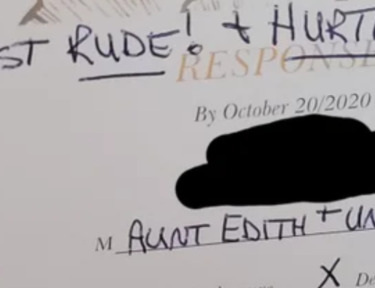Old Navy’s Women’s Clothing Will Now Come In Sizes 0 to 30
If you typically wear plus-size clothing, you may walk into a clothing store and head straight for the “plus size” section, which is typically always secluded from the other sizes. And that can make someone feel a bit excluded and bad about themselves.
However, Old Navy is putting an end to this now. They’ll no longer have a separate section for plus size, but instead, sell all their clothing in a range of sizes from 0 to 30.
Not only will all the clothing be together, but mannequins will also be of the appropriate size to match a variety of the sizes—in size four, 12 and 18. Additionally, signs will be hung in the store to let shoppers know about the changes. Best of all, all the sizes will be the same as well.
Shopping online? Old Navy is also making changes to their website, merging all of the plus-size clothing to be under one navigation menu.
This is certainly a huge change in how they did things previously. Since 2004, the store has carried plus-size clothing sizes 16 and larger, and in 2018 even introduced specialized plus shops in 75 of their stores.
This didn’t go over too well. It turns out that Old Navy was upselling the plus-size clothing, even if it matched its smaller-size counterpart. A Change.org petition was created to end Old Navy’s “discriminatory pricing practices,” which nearly 100,000 people signed.
In 2019, Old Navy began to test stores selling all of the sizes together under one umbrella, and here we are today.
“This is a big change in the way we work,” said Alison Partridge Stickney, head of women’s merchandising at Old Navy. “We had a team that managed our women’s business and a team that managed our plus business. So that meant merchandising, design, production.”
“It is especially lucrative for a retailer like Old Navy which has a broad spectrum of consumers of all shapes and body types,” said Neil Saunders, managing director at GlobalData Retail, in an email. “For Old Navy and other mainstream players, I think they see an opportunity for growth in a part of the market that they don’t serve too well.”
That’s not to say it’s the perfect plan for the retailer. Adding those sizes increases costs due to the extra fabric and manufacturing complexity. To keep costs the same among all sizes, retailers need to purchase the clothing in bulk. . “It certainly helps to have a healthy business and scale to do sizing properly,” said Elizabeth Shobert, director of marketing and digital strategy at fashion analytics company StyleSage.
What do you think of forgoing the plus-size section and grouping all sizes together?




